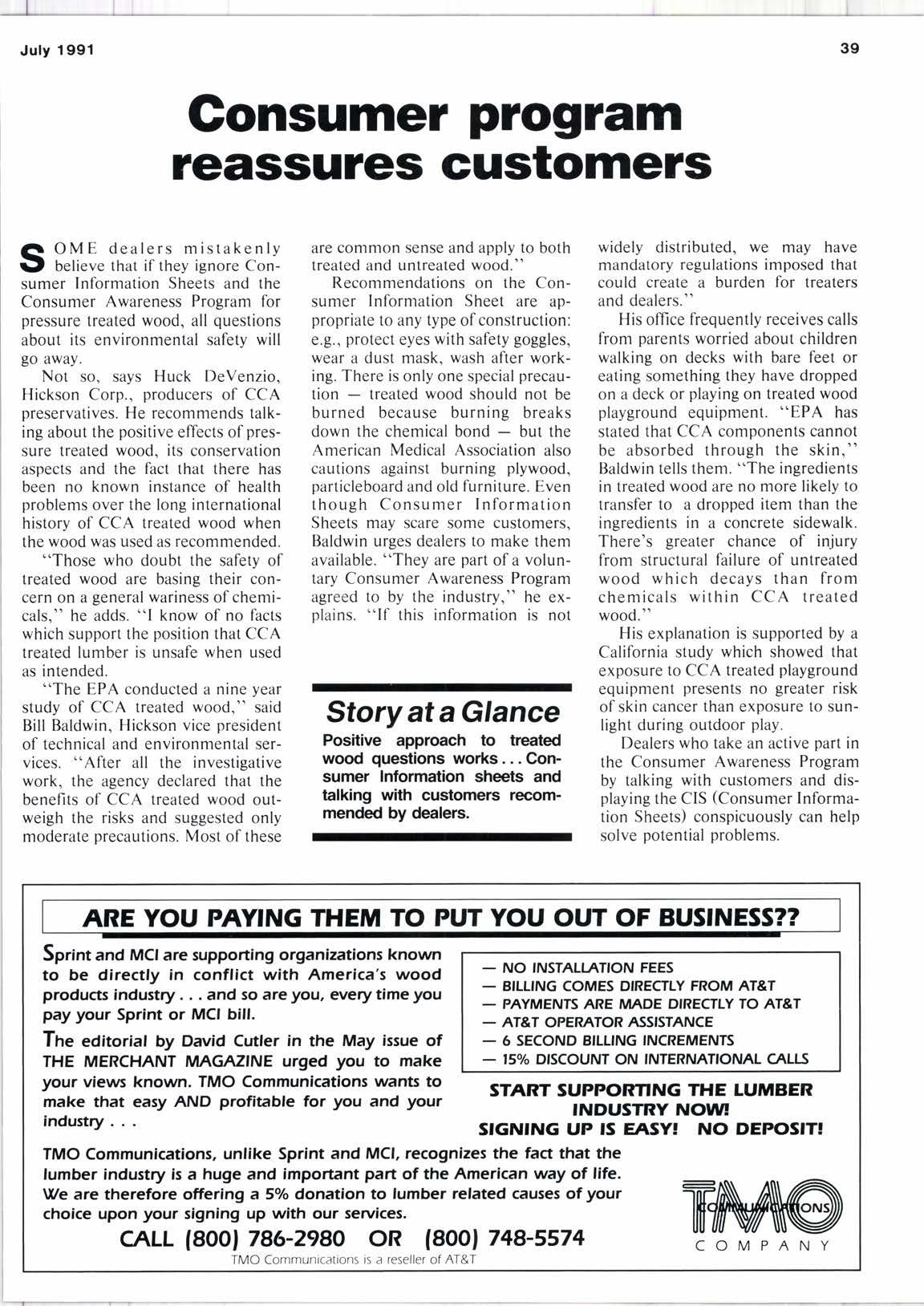
2 minute read
Gonsumer program reassures Gustomers
al OM E dealers mistakenly
D b"ti"u" that if they ignore Consumer Information Sheets and the Consumer Awareness Program for pressure treated wood, all questions about its environmental safety will go away.
Not so, says Huck DeVenzio, Hickson Corp., producers of CCA preservatives. He recommends talking about the positive effects of pressure treated wood, its conservation aspects and the fact that there has been no known instance of health problems over the long international history of CCA treated wood when the wood was used as recommended.
"Those who doubt the safety of treated wood are basing their concern on a general wariness of chemicals," he adds. "l know of no facts which support the position that CCA treated lumber is unsafe when used as intended.
"The EPA conducted a nine year study of CCA treated wood," said Bill Baldwin, Hickson vice president of technical and environmental services. "After all the investigative work, the agency declared that the benefits of CCA treated wood outweigh the risks and suggested only moderate precautions. Most of these are common sense and apply to both treated and untreated wood."
Recommendations on the Consumer Information Sheet are appropriate to any type of construction: e.9., protect eyes with safety goggles, wear a dust mask, wash aflter working. There is only one special precaution - treated wood should not be burned because burning breaks down the chemical bondbut the American Medical Association also cautions against burning plywood, particleboard and old furniture. Even though Consumer Information Sheets may scare some customers, Baldwin urges dealers to make them available. "They are part of a voluntary Consumer Awareness Program agreed to by the industry," he explains. "lf this information is not
Story at a Glance
Positive approach to treated wood questions works... Consumer Information sheets and talking with customers rieoommended by dealers.
widely distributed, we may have mandatory regulations imposed that could create a burden for treaters and dealers."
His ofllce frequently receives calls from parents worried about children walking on decks with bare feet or eating something they have dropped on a deck or playing on treated wood playground equipment. "EPA has stated that CCA components cannot be absorbed through the skin," Baldwin tells them. "The ingredients in treated wood are no more likely to transfer to a dropped item than the ingredients in a concrete sidewalk. There's greater chance of injury from structural failure of untreated wood which decays than from chemicals within CCA treated wood."
His explanation is supported by a California study which showed that exposure to CCA treated playground equipment presents no greater risk of skin cancer than exposure to sunlight during outdoor play.
Dealers who take an active part in the Consumer Awareness Program by talking with customers and displaying the CIS (Consumer Information Sheets) conspicuously can help solve potential problems.
ARE YOU PAYING THEM TO PUT YOU OUT OF BUSINESS??
Sprint and MCI are supporting organizations known to be directly in conffict with America's wood products industry and so are you, every time you pay your Sprint or MCI bill.
The editorial by David Cutler in the May issue of THE MERCHANT MAGAZfNE urged you to make your views known. TMO Communications wants to make that easy AND profitable for you and your industry . .
-
TMO Communications, unlike Sprint and MCl, recognizes the fact that the lumber industry is a huge and important part of the Amerlcan way of fife. We are therefore offering a 5o/o donation to lumber related causes of your choice upon your slgning up with our seruices.










